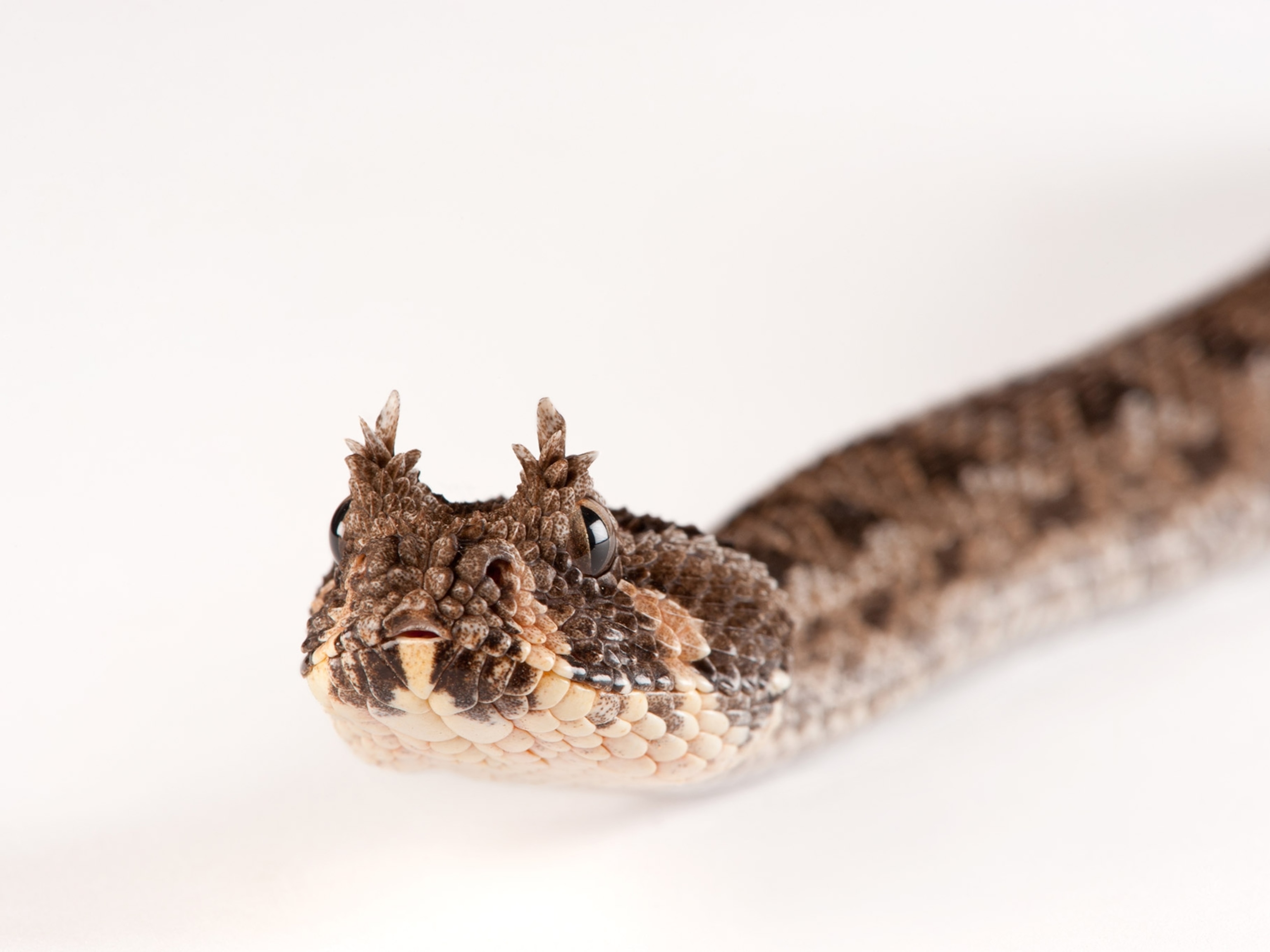The world's smallest snake—and perhaps the smallest possible snake—has been discovered on the Caribbean island of Barbados, a new study says.
At about ten centimeters long (less than four inches), the diminutive reptile might easily be mistaken for an earthworm, and could comfortably curl up on a U.S. quarter, researchers say.
A second new species, only slightly larger, was found on the neighboring island of St. Lucia.
Genetic tests and studies of the snakes' physical features identified the animals as new species, said biologist Blair Hedges of Penn State university, who led the study team.
Both new species belong to a little-known group of known as thread snakes—also called worm snakes and slender blind snakes. Short and slender, thread snakes burrow in the soil and live on a diet of insect larvae.
Small Victories
Finding the smallest snake completes an odd trifecta for Hedges, who also led the teams that discovered the world's smallest lizard and smallest frog.
"The frog and lizard are also found on Caribbean islands," he said. "But [my] describing all three [for science] is somewhat of a coincidence."
Unfortunately the smallest snake—which Hedges calls Leptotyphlops carlae—may be on the verge of extinction. It appears to be live on only a few square kilometers of forest on Barbados, where almost all the original forests have been cleared.
"I think it should be considered critically endangered because of its limited habitat, apparent rarity, and ongoing threats," sad Hedges, whose study will be published tomorrow in the journal Zootaxa.
Island Dwarfism
The world's roughly 3,100 known snake species show an enormous range in body size, from the Caribbean thread snakes to the roughly 30-foot long (10-meter-long) reticulated python.
Many of the smallest snake species are found on oceanic islands—a pattern that holds true for other animals too.
"A number of island species have evolved extremes in size, small and large, apparently because they have come to occupy vacant niches that are normally filled [by other species] on the continents," Hedges explained.
"For example, if centipedes are missing from an island, a snake species can evolve to a smaller size and eat the food normally consumed by the centipede."
But there are limits.
Hedges believes the Barbados thread snake may be at or near the smallest size possible for snakes, due to an evolutionary trade-off between size and reproductive strategy.
Any further miniaturization, he said, would prevent the snakes from producing offspring large enough to forage independently and consume insect prey.
Among the five L. carlae individuals Hedges examined was a pregnant female bearing a single, elongated egg—a rarity among snakes, which tend to produce more offspring in a brood.
But multiple eggs mean smaller eggs, and Hedges speculated that if the Barbados thread snake's eggs were any smaller, they would result in offspring too small too survive.
Small, Smaller, Smallest
Nathan Kley, a biologist at Stony Brook University in New York, said it may be too soon to declare the Barbados thread snake the world's smallest.
Several closely related species are only fractions of an inch longer, and those species are known from only a few observations or museum specimens.
"The true natural size ranges for all of these species remains extremely poorly documented," Kley said.
"Most [thread snakes] are extraordinarily small, and most exhibit secretive, burrowing lifestyles, so they often escape detection."
Even if the new species is the shortest, Kley noted, others are even thinner, resulting in a smaller body volume.





